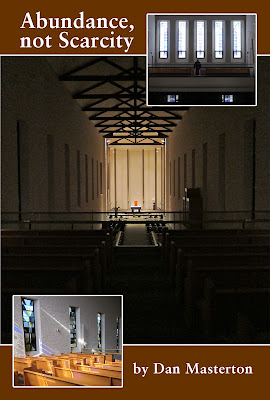In my first year of teaching, I remember hearing about a lot of Twitter beefs – keep in mind, my juniors and seniors in 2012-13 were either really young Millennials or the oldest Z’ers, and this was the pinnacle of social media buzz at the moment. As I prepared to take my first job in campus ministry the following year, I was dead set on creating social media accounts.
Watching them showed me the negativity they wrought over these apps, but I could also see how they were building community and creating additional connections. And while I didn’t want to endorse the downsides, I wanted to infiltrate the sphere.
My goal was to get students to follow the campus ministry account and then infuse their feeds with some faith. Leaning heavily on pictures of their friends doing ministry and service and creating beautiful things for our community, I wanted to make students double-take, mid-scroll, and acknowledge their faith while treading in an area where it previously had perhaps been absent.
I was able to follow through on my part, sharing early and often and creating a steady engagement with the school community; I was never prouder than when I finally laid down after directing a four-day Kairos and had the pleasure of liking and retweeting post-Kairos love tweets from students, rebroadcasting them out into everyone’s feeds – one fleeting but potent reflection of the way faith could and would seep into these arenas.
I have written over the years about the importance of showing up, about how even if I’m not the best network-builder or the wisest, most eloquent writer, I am steady. When I have an idea and a marked desire to be present, I can and do follow through to make it happen. I always hope that, in some strange or goofy way, that my relentless practice of writing is continually sharpening my soul and perhaps providing a bit of flint by which another may sharpen theirs in turn.
It’s in this same vein that I once again dove into the NaNoWriMo challenge in 2021.
In 2020, as the pandemic dragged on, I decided to take a first swing at fiction writing, approaching it, as always, as another way to try to bring faith into something. As the calendar flipped to 2021, I took my draft off the shelf and had a lot of fun writing and editing, and then goofing around with recording the story, and writing silly ads for the audiobook podcast. What There Is to Be Done was an honest, slightly idealistic, definitely based-on-experience reflection on some of the realities of educational and campus ministry, and young adult discernment overall.
As I prepped to write in NaNoWriMo 2021, the threads of discernment kept spinning. I found myself stewing on the breadth of multipotentiality. I was looking at the graces of my own marriage and family, of my own ministry and career, and thinking about capacities versus passions, about “soulmates” versus choices. And seeing the increased social understanding of mental health, and the growing comfort with naming and discussing it, I thought about how often (Millennials especially) end up trying to discern in times of drought and famine, when we’re down or tired, rather than in the midst of joy and stability. The result this time is a bit different.
Abundance, not Scarcity is a story of someone who realizes their stagnation and complacency, and turns to prayer to recognize unrealized capacities and unexplored passions and desires, all of which helps him toward a new decisiveness.
Once again, I’ll be offering an audiobook podcast, sharing one chapter a week over Apple, Spotify, Google, and my blog. But what’s more, I’ve also formatted the book not just as a paperback you can order but also as a free eBook, optimized for reading in the Books app on iPhone or iPad. (Or visit my LinkTree for these links collected in one list.)
My hope now, as it was then early in my career, is that you’ll invite my work to infiltrate your feed. Follow my Twitter or Facebook Page for alerts on new episodes (each Tuesday), and follow the podcast in your preferred app. I don’t think my story will change your life, but I think listening to it might be a welcome break and a potential improvement over the quagmires of doom-scrolling, the excesses of political immersion, or even the infinity of listening to playlists.
Add it to your feed or save it to your Books app – and next time you’re riding the train or sitting in the terminal or waiting to see the doctor, or even winding down to relax before bed, open this up instead of a social app or a streaming service. And see how reflecting might draw you toward the Spirit moving in you.







